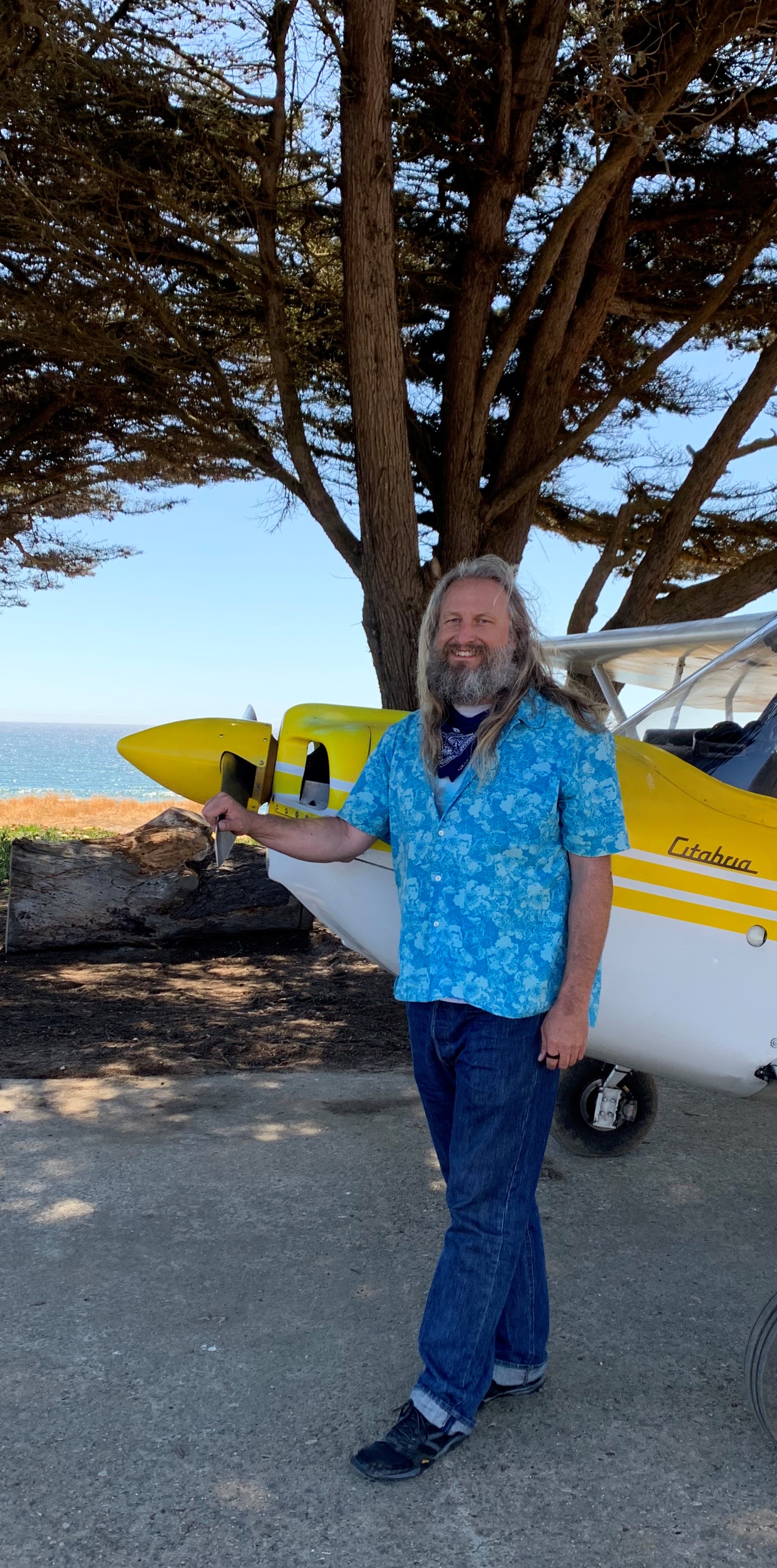Becoming a safer pilot through aerobatics
By Zinnia Kilkenny, IAC 437244

ZK: Aviators are grand storytellers. These tales often begin with how and by whom they were introduced to aviation. What was your start?
BH: I don't remember when aviation wasn't part of my life. My father, Gene Harvey, had a long list of jobs. The two that benefited me most were his career as an elementary school teacher and his profession as a CFI.
Initially, my father flew around the Midwest in a Cessna 140 for fun. While there was a grass strip in my hometown, we were just as likely to fly off the hayfield on our farm. This is where I come in. Although I don't remember the event, memorialized in my father’s logbook is my first flight in a bassinet nestled in the baggage area at three months to visit my grandparents. My first flying memory was a ride with my father in that same Cessna. I remember sitting on a green plastic booster seat. While I was too little to have any hope of seeing over the instrument panel, it did raise me high enough to see out the right side window.
It was fascinating to watch the Earth drop away, and the wheel of the main gear slowly rotated to a stop, and the cows in the adjoining field shrink to the size of ants. Although I know the physics of flight well and have made it my career, the magic of this still fascinates me.
ZK: On the topic of magic, why do you fly aerobatics?
BH: I want to be a safe pilot. I feel that aerobatics is the path to that goal. Several years ago, I had aspirations of a career as a test pilot. Since I figured this out too late for the usual training progression in the military or recognized test pilot school, I had to define my own curriculum and seek the necessary training.
The ability to precisely control an aircraft in all attitudes is a stepping stone. Early in my training, I was anxious just doing power-on stalls. The high pitch angles, feeling out of control as the nose dropped, and the associated roll in one direction or another were uncomfortable. The thought of spins and rotating to my death from a poorly executed stall was always in the back of my mind. It caused me to tense up every time I pulled back on the yoke during a training stall.
Getting into a Decathlon with an instructor to calmly and methodically work through each of the elements addressed this apprehension. Initially, all I could see was the world whirling around, leaving me with no sense of what was going on. However, each one I did reduce that overload of sensory input. Eventually, I could see what was going on around me and finally determine how to recover repeatably on a given heading. This provided an enormous improvement in confidence.
ZK: What do you do for a living to pay for the aviator’s lifestyle?
BH: In high school, I used to say I was a foliage relocation engineer. Meaning that I buck between 50 and 75-pound hay bales for a nickel apiece to pay for flying. Funding for aviation is easier to come by now that I have an actual Mechanical Engineering degree, designing composite aircraft structures and aircraft hydraulic and fuel systems.
It wasn’t until I began working for Scaled Composites where I could see a way to combine my career and my hobby as a Flight Test Engineer. I started working there during the time SpaceShipOne made its first power flight, and Global Flier made its non-stop circumnavigation of the Earth. At that time, it seemed like anything was possible. However, the competition to fly in one of the company’s creations with 500 hours wasn’t going to happen. I needed more flight time and breadth of experience. I decided the best way to do that was to learn about all attitude flying while earning my tailwheel endorsement. While learning to be comfortable with the ground above me, I also learned to appreciate the discipline and precision necessary to fly aerobatics well.
Looking for opportunities to be a full-fledged test pilot, I took a job at Zee. Aero, a company that has developed a series of demonstration aircraft for the Urban Air Mobility market. Although its name has changed to Wisk, it continues to develop innovative electric vertical takeoff and land aircraft.
Working there allowed me to fly in New Zealand, where I earned the CAA equivalent to my FAA certificates plus one that's unavailable in the US: an aerobatic rating. To earn it, I had the opportunity to fly in a rainbow-colored Victa Airtourer within view of the snow-covered Southern Alps of the South Island. I felt fortunate to receive instruction from equally unique instructors. My primary instructor, besides being an aerobatic instructor, turned out to be the first New Zealand woman to ski the full distance to the South Pole. Her husband and my examiner held similarly impressive credentials as a New Zealand National Aerobatic champion. I felt honored at the end of my check ride when he said I was a “good bugger.” That’s good, right?
ZK: Competitors have their own metric for success. How did your first contest go, and what is on the horizon?
BH: I told myself that my first contest would be a personal win if I completed a sequence without zeroing a figure. Secretly, I had hoped for more. What I forgot was the most important goal, which is to have fun. My desire to excel at my first contest caused me to put off the enjoyment of flying in a one for far too long.
I look forward to continuing to practice to achieve multiple goals in the areas of judging, powered, and gliders. One day soon, I would like to compete at Nationals.
Ben Harvey IAC#: 434182
IAC Chapter: 38
Occupation: Engineer

